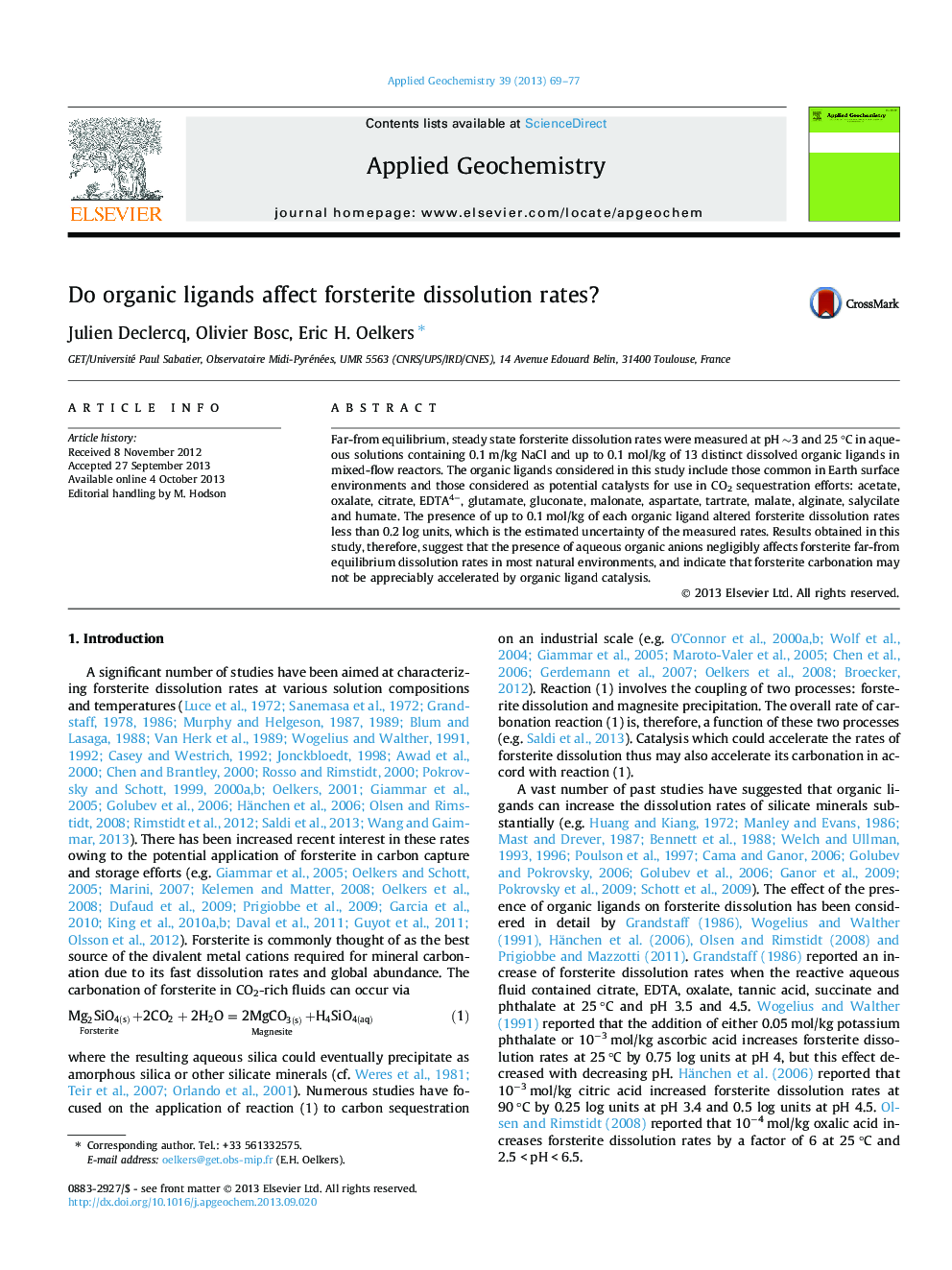| Article ID | Journal | Published Year | Pages | File Type |
|---|---|---|---|---|
| 4435890 | Applied Geochemistry | 2013 | 9 Pages |
•Rate determination at pH 3 and 25 °C as a function of organic ligand concentration.•In general, rates are unaffected by the presence of organic ligands.•Aqueous organic ligands will likely not accelerate forsterite carbonation during CCS.
Far-from equilibrium, steady state forsterite dissolution rates were measured at pH ∼3 and 25 °C in aqueous solutions containing 0.1 m/kg NaCl and up to 0.1 mol/kg of 13 distinct dissolved organic ligands in mixed-flow reactors. The organic ligands considered in this study include those common in Earth surface environments and those considered as potential catalysts for use in CO2 sequestration efforts: acetate, oxalate, citrate, EDTA4−, glutamate, gluconate, malonate, aspartate, tartrate, malate, alginate, salycilate and humate. The presence of up to 0.1 mol/kg of each organic ligand altered forsterite dissolution rates less than 0.2 log units, which is the estimated uncertainty of the measured rates. Results obtained in this study, therefore, suggest that the presence of aqueous organic anions negligibly affects forsterite far-from equilibrium dissolution rates in most natural environments, and indicate that forsterite carbonation may not be appreciably accelerated by organic ligand catalysis.
